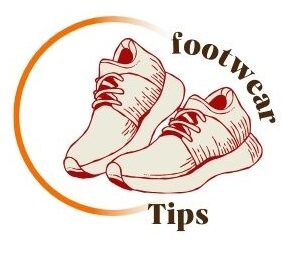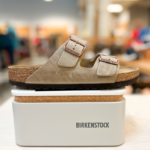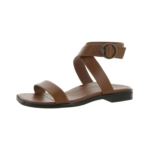Address:
- 2365 Hood Avenue, San Diego, CA, 92123
Barefoot shoes provide various health benefits such as improved body posture and balance, increased calorie burn during exercise, development of a more natural gait, and enhanced ankle and foot movement. Barefoot shoes have gained popularity in recent years due to their numerous health benefits.
These shoes are designed to mimic the sensation of walking barefoot, allowing for natural foot movement and increased sensory feedback. By wearing barefoot shoes, individuals can experience improved body posture and balance, as well as burn more calories while exercising.
Additionally, these shoes can help develop a more natural gait and provide a greater degree of movement in the ankle and foot. Whether you are an athlete, someone who walks a lot, or even someone who spends most of the day seated at a desk, incorporating barefoot shoes into your daily routine can contribute to long-term foot health and mobility. We will explore the various benefits of wearing barefoot shoes in more detail.

Credit: frankelfoot.com
Barefoot shoes offer numerous benefits, including improved body posture, balance, increased calories burnt during exercise, a more natural gait, and enhanced ankle and foot movement. They also contribute to stronger feet, fewer injuries, and improved overall foot health. Whether walking, exercising, or at a desk, barefoot shoes can support long-term foot health and mobility.
The Rise of Barefoot ShoesBarefoot shoes have been gaining popularity in recent years due to their numerous health benefits. These shoes are designed to mimic the feeling of walking barefoot while still providing protection and support for your feet. The barefoot movement has a historical context dating back to early humans who walked barefoot, and modern humans are adopting this practice once again. In this blog post, we will explore the historical context of the barefoot movement, as well as its modern adoption and popularity.Barefoot shoes are a unique type of footwear designed to mimic the natural movement and function of walking barefoot. These shoes are specifically engineered to provide a wide range of benefits for the wearer, from improved posture and balance to increased ankle mobility and proprioception. Understanding the anatomy of barefoot shoes can help you appreciate their design features and materials, as well as their comparison with traditional footwear.
Barefoot shoes are characterized by specific design features and the use of certain materials that contribute to their unique functionality. Here are some of the key design features and materials you can find in barefoot shoes:
When comparing barefoot shoes with traditional footwear, there are several notable differences. Here’s how barefoot shoes stand out:
| Barefoot Shoes | Traditional Footwear |
|---|---|
| Zero heel drop | Elevated heel |
| Wide toe box | Narrow toe box |
| Flexible sole | Stiff sole |
| Lightweight materials | Heavier materials |
These differences in design and materials contribute to the unique benefits of barefoot shoes, such as improved foot strength, enhanced balance and stability, and a more natural walking experience.
Overall, understanding the anatomy of barefoot shoes, including their design features and materials, can help you make an informed decision about incorporating them into your footwear collection. Whether you’re looking to improve your posture, strengthen your feet, or simply enjoy the freedom of natural movement, barefoot shoes offer a compelling alternative to traditional footwear.
Barefoot shoes offer numerous benefits, one of the most significant being the strengthening of foot muscles. By allowing the feet to move and function naturally, these shoes promote the activation and development of the muscles in the feet and ankles, leading to improved overall foot health.
The design of barefoot shoes encourages the natural movement of the foot, activating the intrinsic muscles and tendons. With less interference from cushioning and support, the foot is able to engage all its muscles, leading to improved strength and flexibility. This natural activation helps in maintaining the foot’s natural arch and contributes to better balance and stability.
Over time, wearing barefoot shoes can lead to long-term benefits for foot health. The strengthened foot muscles and improved flexibility not only reduce the risk of injury but also contribute to better posture and gait. Additionally, the enhanced proprioception and sensory feedback from the ground promote better stability and balance, which is particularly beneficial for older individuals.
Improving posture and balance is essential for overall well-being. Barefoot shoes offer several benefits that contribute to better postural alignment and enhanced balance. In this section, we’ll explore the link between footwear and postural alignment and the ways in which barefoot shoes can improve balance through sensory feedback.
Conventional shoes often restrict natural foot movement, leading to poor posture and alignment issues. The supportive structures in traditional footwear can weaken the muscles in the feet and lower legs, negatively impacting overall posture. In contrast, barefoot shoes promote a more natural gait and encourage the body to maintain proper alignment, which can help alleviate postural issues.
Barefoot shoes provide increased sensory feedback, allowing wearers to better sense the ground beneath them. This heightened awareness of foot placement and weight distribution enhances balance and stability. The proprioceptive input from the ground helps improve overall body coordination and can reduce the risk of falls and injuries.
Experience the benefits of barefoot shoes, including improved body posture, balance, and a more natural gait. With barefoot shoes, you can enjoy greater ankle and foot movement, while also burning more calories during exercise. Say goodbye to injuries and embrace the freedom of natural movement with barefoot shoes.
Natural Gait and Injury PreventionBarefoot shoes have been gaining popularity in recent years for their numerous health benefits. One of the most significant benefits of barefoot shoes is that they encourage a natural gait and prevent injuries. Here are some ways barefoot shoes can help you maintain a natural gait and prevent injuries.How Barefoot Shoes Encourage a Natural StrideBarefoot shoes are designed to mimic the feeling of walking barefoot while still providing some protection to your feet. They have a thin and flexible sole that allows your feet to move naturally and feel the ground beneath you. This helps you develop a more natural stride, as you can adjust your foot position and step more accurately. Walking in barefoot shoes can also help strengthen the muscles in your feet and ankles, which can further improve your gait.Evidence Linking Minimalist Shoes and Reduced InjuriesStudies have shown that wearing barefoot shoes can help reduce the risk of injuries. A study published in the Journal of Sport and Health Science found that runners who wore minimalist shoes had a lower risk of injury compared to those who wore traditional shoes with more cushioning. Another study published in the International Journal of Sports Physical Therapy found that runners who transitioned to barefoot shoes had fewer injuries and improved their running economy.Overall, barefoot shoes can help you maintain a natural gait and prevent injuries. By allowing your feet to move naturally and feel the ground beneath you, barefoot shoes can help strengthen the muscles in your feet and ankles, improve your balance and stability, and reduce the risk of injury. If you’re looking for a way to improve your foot health and overall well-being, consider trying out a pair of barefoot shoes.
Credit: www.somfootwear.com
Experience the benefits of barefoot shoes and burn more calories with every step. These shoes improve body posture and balance, enhance your natural gait, and increase ankle and foot movement, resulting in a more effective calorie burn during exercise. Say goodbye to discomfort and hello to a healthier, more active lifestyle.
Burn More Calories with Every StepWhen it comes to exercise, we all want to make the most of our efforts and burn as many calories as possible. That’s where barefoot shoes come in. Not only do they provide a more natural and comfortable way of walking and running, but they also help you burn more calories with every step. Let’s dive into the science behind it.When it comes to wearing barefoot shoes, one of the key benefits is the boosted proprioception and stability they offer. Understanding the role of proprioception and how barefoot shoes enhance stability can provide valuable insights into the advantages of choosing this footwear option.
Proprioception refers to the body’s ability to sense its position, movement, and spatial orientation. It is essentially the body’s internal GPS system, allowing for coordinated and smooth movement. This sensory feedback is crucial for maintaining balance, stability, and agility.
With their minimalistic design and thin soles, barefoot shoes facilitate a heightened awareness of the ground beneath the feet. This increased sensory feedback from the feet to the brain improves proprioception, leading to greater stability and balance. By allowing the feet to move more naturally and engage the muscles, barefoot shoes promote a stronger connection between the body and the ground, resulting in improved stability and reduced risk of falls or injuries.
When it comes to barefoot shoes, one of the standout features that sets them apart from traditional footwear is the zero drop sole. The zero drop sole means that the heel and the forefoot are at the same level, providing a more natural and minimalistic feel. Let’s explore the benefits of this unique design.
Zero drop refers to the level platform of the shoe, where the heel and the forefoot are at the same distance from the ground. This design allows for a more natural posture and gait, mimicking the experience of walking barefoot. It matters because it promotes a more natural and healthy alignment of the body, reducing the risk of strain and injury.
The zero drop sole of barefoot shoes has a significant impact on joint health and alignment. By promoting a more natural posture and gait, it helps in reducing the stress on the joints, especially the ankles, knees, and hips. This can lead to improved joint health and reduced risk of common issues like plantar fasciitis and knee pain.
Transitioning to barefoot shoes can be a game-changer for your lifestyle. Not only do they offer a range of health benefits, but they also promote a more natural way of moving. However, integrating barefoot shoes into your daily activities may require some adjustment. Here are some tips to help you adapt:
By following these guidelines, you can smoothly transition to barefoot shoes and enjoy the benefits they offer.

Credit: www.facebook.com
Barefoot shoes offer numerous benefits, such as improved body posture and balance, increased calorie burn during exercise, and a more natural gait. However, it is important to consider potential drawbacks, including the need for a transition period and the possibility of increased foot sensitivity.
Potential Drawbacks and ConsiderationsWhile barefoot shoes have numerous health benefits, it is essential to understand the potential drawbacks and considerations before making a switch. In this section, we will discuss two important factors that you should consider before buying barefoot shoes.Understanding the Risks and LimitationsAlthough barefoot shoes offer a more natural experience, they may not be suitable for everyone. Here are some potential risks and limitations to keep in mind:– Lack of protection: Barefoot shoes provide minimal protection to your feet, making them more susceptible to injuries. – Adjustment period: It takes some time for your feet to adjust to the new shoes, and you may experience discomfort during this period. – Unsuitable for certain activities: Barefoot shoes may not be suitable for high-impact activities such as running, as they lack the necessary cushioning and support.Suitability for Different Foot Types and ConditionsAnother crucial consideration is the suitability of barefoot shoes for different foot types and conditions. Here are some factors to keep in mind:– Foot shape: Barefoot shoes are designed to mimic the natural shape of your foot. If you have flat feet or high arches, you may need to look for shoes that provide additional support. – Foot conditions: If you have foot conditions such as plantar fasciitis, bunions, or hammertoes, barefoot shoes may not provide the necessary support and may even exacerbate the condition. – Climate and terrain: Barefoot shoes are not suitable for extreme weather conditions or rough terrain. You may need to wear additional layers or switch to regular shoes in such situations.In conclusion, while barefoot shoes offer numerous benefits, it is crucial to understand the potential risks and limitations before making a switch. It is also essential to consider your foot type, condition, and the environment you will be wearing the shoes in, to ensure maximum comfort and support.Barefoot shoes offer several benefits, including improved posture and balance, increased calorie burn during exercise, a more natural gait, and improved ankle and foot mobility. They can also help strengthen muscles and bones in the feet and ankles, reduce injuries, and improve stability and balance.
Wearing barefoot shoes can strengthen foot muscles and improve natural gait and posture. It may also lead to fewer injuries and greater ankle and foot mobility.
Yes, you can wear barefoot shoes all day, but with certain considerations. Barefoot shoes offer numerous benefits such as improving posture, balance, and developing a more natural gait. They can also help burn more calories during exercise and provide greater ankle and foot movement.
However, it is important to choose the right pair that fits well and provides adequate support for your feet.
Wearing barefoot shoes can improve body posture and balance, burn more calories during exercise, develop a natural gait, and increase movement in the ankle and foot. It also strengthens muscles and bones in the feet and ankles, preventing injury and improving stability and balance.
Wearing barefoot shoes can provide numerous benefits for your overall health and well-being. These shoes help improve body posture and balance, increase calorie burn during exercise, and promote a more natural gait. Additionally, they enhance ankle and foot mobility, strengthen muscles and bones, and reduce the risk of injuries.
By embracing barefoot footwear, you can experience the advantages of natural foot movement, increased sensory feedback, improved stability and balance, and enhanced proprioception. Invest in barefoot shoes to protect your feet and enjoy long-term health and mobility.
Get our most valuable tips right inside your inbox, once per month!
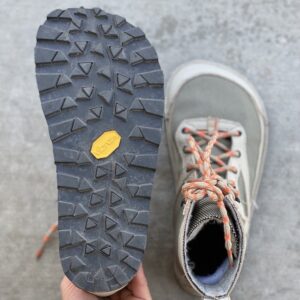
Looking for walking shoes with a wide toe box? Check out these top options for men and women that offer comfort, support, and a roomy

Looking for cheap barefoot shoes? Check out WHITIN Men’s Ultra-ventilated Barefoot Shoes for $19.99 on Amazon.com or Men’s Quick-dry Barefoot Shoes for $8.47 on Temu.
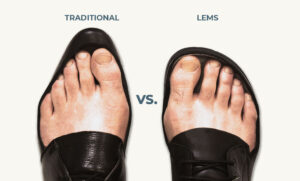
Foot-shaped shoes are available in various brands such as Lems Shoes, Padgene, Barekick, WHITIN, relxfeet, Xero Shoes, New Balance, Earthing Harmony, Atoms, BRONAX, Hike Footwear,

Toddler Barefoot Shoes provide a minimalist and lightweight option for kids to splay their feet naturally while walking, running, or playing sports. These shoes have
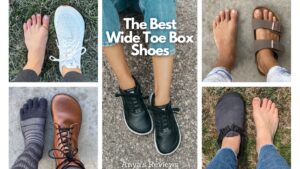
Discover a variety of wide toe box shoes for women in Austin, Texas, including options from Orthofeet, WHITIN, Temu, and more. These shoes offer comfort
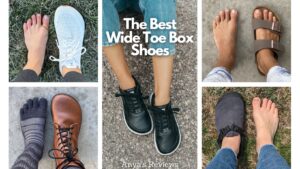
Toe box shoes provide ample space for the toes, allowing them to move freely and comfortably. They are available in various styles and sizes, with
